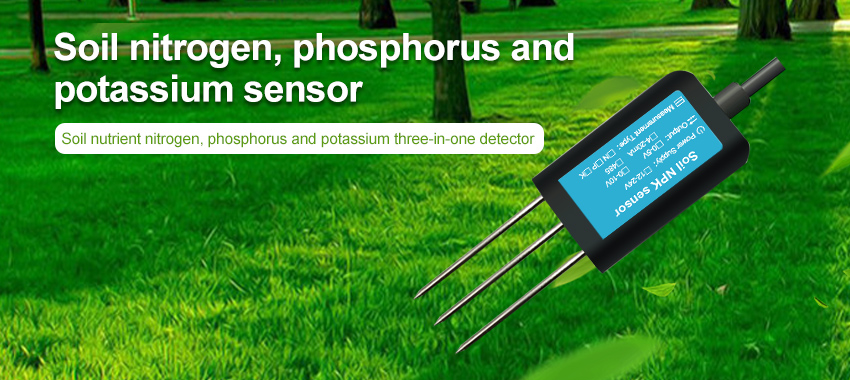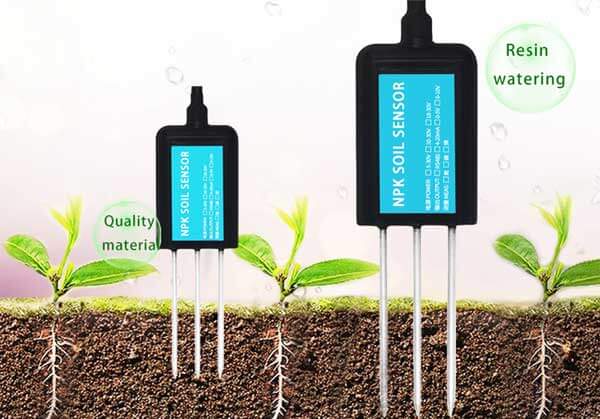Soil management is at the heart of successful agriculture. The quality and health of the soil directly impact crop growth, nutrient availability, water retention, and overall productivity. Traditionally, farmers have relied on visual assessments and manual sampling to monitor soil conditions. However, with the advent of technology, soil sensors have emerged as powerful tools that provide accurate and real-time data on various soil parameters. In this article, we will explore how soil sensors are revolutionizing soil management practices, enabling farmers to make data-driven decisions for optimal crop production.
Understanding Soil Sensors:
Soil sensors are electronic devices designed to measure and monitor different soil properties. These sensors utilize advanced technologies such as capacitance, conductance, or electrical resistivity to assess parameters like moisture content, temperature, pH levels, salinity, and nutrient levels. By continuously collecting and analyzing data, soil sensors provide valuable insights into the dynamic nature of soil conditions.

Real-Time Monitoring:
One of the significant advantages of soil sensors is their ability to provide real-time data on soil conditions. Traditional sampling methods can be time-consuming and may not capture changes that occur between sampling intervals. Soil sensors, on the other hand, offer continuous monitoring, allowing farmers to detect fluctuations in moisture levels, nutrient content, or pH values as they happen. This real-time information enables prompt intervention, preventing potential yield losses and optimizing resource utilization.
Precise Irrigation Management:
Water is a precious resource, and efficient irrigation is crucial for sustainable agriculture. Soil sensors play a vital role in precision irrigation management by providing accurate data on soil moisture levels. Farmers can access this information and determine when and how much water to apply, avoiding both under- and over-irrigation. By matching irrigation to the specific needs of crops, soil sensors contribute to water conservation efforts and minimize the risk of waterlogging or drought stress.
Optimizing Nutrient Application:
Proper nutrient management is essential for healthy plant growth and optimal yields. Soil sensors provide real-time data on nutrient levels, enabling farmers to fine-tune fertilizer application. By understanding the nutrient availability in the soil, farmers can adjust their fertilization strategies, ensuring that plants receive the right amount of nutrients at the right time. This targeted approach not only optimizes yields but also reduces the environmental impact of excess fertilizer runoff.
Detecting Soil Variability:
Soils exhibit natural spatial variability, with variations in texture, organic matter content, and nutrient distribution. Soil sensors help identify these variations by providing detailed information about different sections of a field. By mapping soil properties, farmers can then implement site-specific management strategies, tailoring practices such as irrigation, fertilization, or crop selection to suit the unique needs of each area. This precision agriculture approach maximizes resource efficiency and minimizes input waste.
Early Detection of Soil Issues:
Soil sensors act as early warning systems, alerting farmers to potential soil problems before they become evident visually. For example, sensors can detect changes in soil pH levels, which may indicate soil acidification that could impact nutrient availability. By receiving timely alerts, farmers can take corrective measures promptly, preventing crop deficiencies or toxicities and maintaining soil health in the long term.
Integration with Farm Management Systems:
Advancements in technology have made it easier for farmers to integrate soil sensor data with farm management systems. These systems collect, analyze, and visualize the data obtained from soil sensors, providing comprehensive insights into soil conditions. By combining soil sensor data with other relevant information such as weather forecasts, historical yield data, or pest monitoring, farmers can make informed decisions and develop customized management plans for their fields.

Future Prospects and Challenges:
As technology continues to evolve, soil sensors hold immense potential for improving soil management practices further. Innovations such as wireless connectivity, remote sensing capabilities, and machine learning algorithms will enhance data collection, interpretation, and decision-making capabilities. However, there are challenges to overcome, including sensor calibration, data interpretation, and cost considerations. Continued research and collaboration between scientists, engineers, and farmers will play a vital role in addressing these challenges and advancing the adoption of soil sensor technologies.
Conclusion:
Soil sensors have transformed soil management practices, empowering farmers with accurate, rea







